
Motorhomes come in all different shapes and sizes, from small campervans to large A-Class motorhomes. However, there is something that all motorhomes tend to have in common. In most cases, motorhomes are pushing the limits of the suspension system of their base vehicle. A motorhome with all its furniture and appliances generally weighs close to the maximum limits of the base vehicle chassis and suspension. Hence, the suspension operates in a highly compressed state for the whole life of the motorhome.
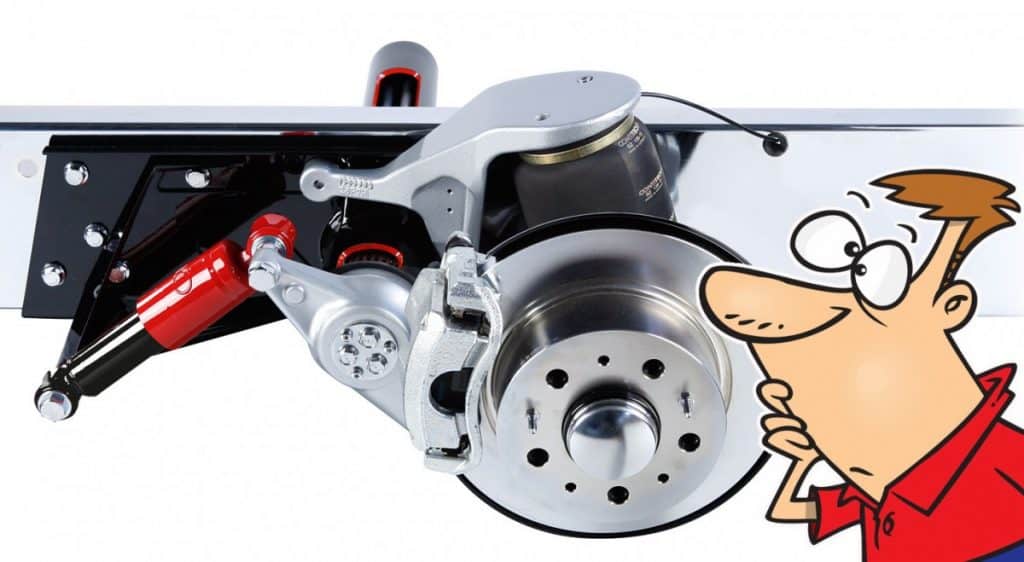
Due to the generally poor state of many UK roads (potholes), motorhome suspension systems have a pretty hard life.
This can result in premature failure (snapped springs) and poor ride quality within a relatively short time frame.
With this post, I wanted to discuss when your motorhomes suspension systems may need repairing. However, I’ll also discuss the motorhome suspension system upgrade options you could consider.
Disclaimer: Hey! By the way… any links on this page that lead to products on Amazon or Caravan Guard are affiliate links, and I earn a commission if you make a purchase, with no additional cost to you 🙂
- Dissolves waste and removes odours naturally and has delightful mild fragrance
Want To Visit Horton Common? – Book Here
Table of Contents
Introduction To Motorhome Suspension Systems
Depending on the size and weight of your motorhome, a couple of different suspension designs are used. For small campervans, they will typically have similar suspension setups to your car.
That will be a Macpherson strut at the front. This contains a shock absorber/damper located within a coil spring.
The rear suspension on a small motorhome could also be another Macpherson strut, or it could also be a torsion beam.
When it comes to larger motorhomes, the front again will typically use a Macpherson strut, but the rear will likely use leaf springs.
However, motorhomes based on AL-KO chassis use torsion beam rear suspension as you can see in my post on how motorhomes are built.
As I stated above, your motorhome suspension can have a pretty hard life, therefore its not unlikely if you own a motorhome for over 5 years the suspension system is going to need some attention.
The video below from Practical Motorhome shows the replacement and upgrade of a front Macpherson strut on a motorhome.
As shown in the video above, the shock absorber/damper on this motorhome was no longer providing sufficient impact resistance. As Dave demonstrated, he could easily push down the damper with his hand.
Now, if a person can compress the damper with their hand its not hard to imagine what the weight of a motorhome would do when it hit a pothole.
The owner of the motorhome going over a pothole/speed bump would feel a hard impact.
As part of this repair/upgrade, higher-rated/stronger front springs were added. This will take some load off the shock absorber/damper and increase its working life while improving ride quality.
DIY Macpherson Strut/Front Spring Replacement?
Now, I love doing DIY, and I have changed front struts and shock absorbers on my car before. However, its a job I no longer feel comfortable carrying out, and I wouldn’t recommend it as a DIY job.
The reason is, one part of the job is uncompressing and compressing springs. When you are doing this job via DIY, it involves the use of clamps.
However, it can be tricky to get the clamps into position, and they can slip. If the clamps do slip and fall off once the strut is dissembled, that’s a lot of kinetic energy in the spring which is suddenly released.
The point is, working with suspension springs can be pretty dangerous. Therefore, I no longer compress the springs. I’ll get a local garage to do it.
If you are competent to work on the motorhome suspension you could take the strut off, take it to the local garage with the new springs and they will swap them over for you with their hydraulic press.

I don’t personally recommend the use of coil spring suspension clamps. If the clamps slip/fall off the result can be pretty dangerous: Image – Amazon.co.uk
Motorhome Rear Suspension Setups
When it comes to the rear suspension on a motorhome, there are a couple of different setups. As stated above, motorhomes built on lightweight AL-KO chassis will typically have a torsion beam rear suspension.
A torsion beam is essentially two pieces of metal section with a rubber separation layer. The rubber provides the resistance, hence the suspension effect. However, shock absorbers are also required.
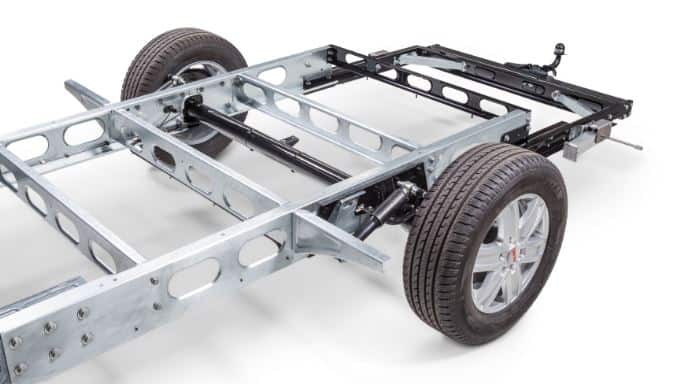
As you can see in the image above, even an AL-KO motorhome chassis can be set up for towing.
While torsion beam suspension is perfectly suitable for lighter-weight coachbuilt motorhomes, its not suitable for heavy loads.
Hence, that’s why larger/heavier motorhomes use leaf spring suspension.
For instance, many panel van conversions, as they are based on standard commercial heavy-duty steel chassis, will likely have leaf springs and shock absorbers.
That’s also the case for pretty much every A-Class motorhome.
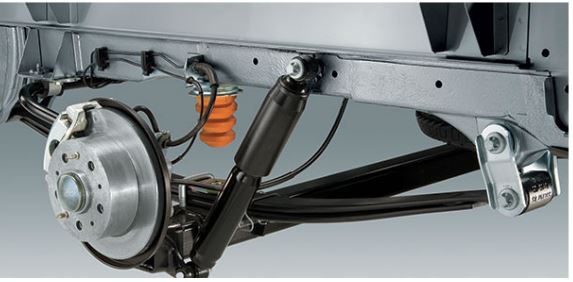
Motorhome Rear Coil Spring Suspension Assisters
When it comes to purchasing used motorhomes, depending on the age, you may find that if its fitted with rear leaf spring suspension the back of the motorhome droops down quite a bit.
As stated earlier in this post, this can be due to the fact a motorhome generally carries quite a bit of weight.
The suspension does its best to support that weight, but eventually, it will lose its springiness.
Now, that could be because some of the leaf springs have snapped, and if that’s the case, they need to be replaced.
However, if the springs are still intact, but they are just a bit tired, then one upgrade option is coil spring assistors.
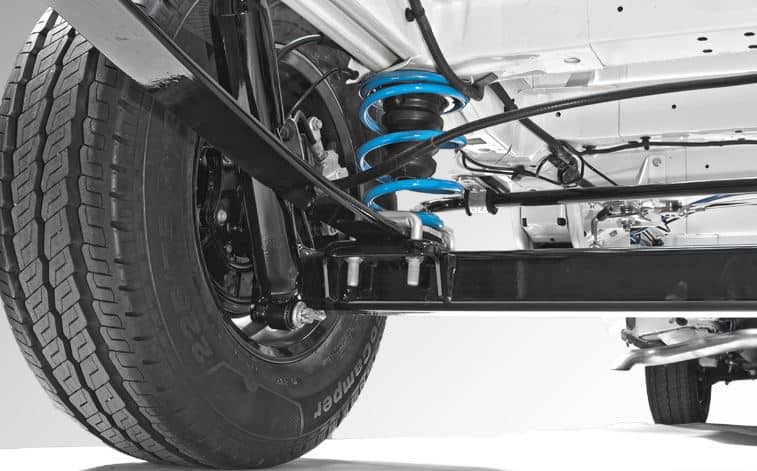
The addition of coil spring assisters can provide several benefits. For instance, they can return the rear ride height of the motorhome to its original appearance.
Coil spring assisters can also improve road handling and driving dynamics. In other words, rear coil spring assisters can help to reduce body roll and pitching.
Which intern can not only make the motorhome safer to drive but also more enjoyable.
Rear coil spring assisters are also a good choice if you use your motorhome for towing as the hitch weight of the trailer can make motorhome rear end droop even more pronounced.
The only real downside with coil spring assistors is if the motorhome is not fully laden, the ride may be too stiff and bouncy.
That’s why some motorhome owners choose to go with air suspension setups which can be more flexible with the support they provide depending on the pressure of the air bladders.
Motorhome Air Suspension Upgrades
I’ve got a fairly comprehensive post on motorhome air suspension setups, the link is next to the image below. Therefore, I don’t wish to repeat myself too much in this post.
I’ll just provide a brief overview of the benefits. Essentially an air suspension upgrade can provide multiple benefits for your motorhome.
There are a couple of different levels of motorhome air suspension, known as semi and full. A semi-air suspension setup is similar to the coil spring assisters above.
However, obviously, instead of springs, small air bladders are used.
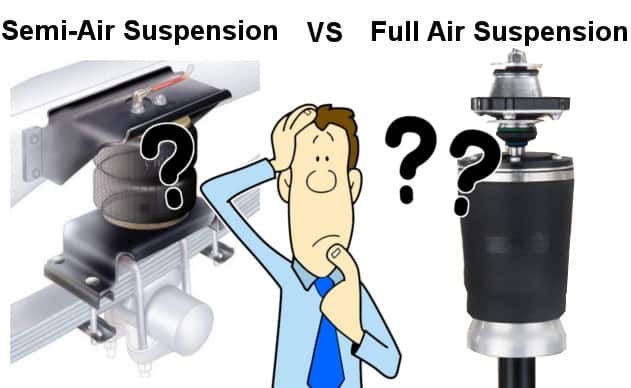
The advantage of using rear air bladders over coil springs is you can adjust the amount of air pressure in the bladders to provide more or less support.
Hence, you can adjust the air pressure depending on how much load you are carrying in the back of the motorhome.
Manual semi-air suspension setups will require a foot/bike pump, or a 12V air compressor may be included as part of the installation.

A typical example of a rear semi-air suspension kit for motorhomes: Image – Amazon.co.uk
Rear air bladders can reduce rear-end droop while providing improved handling and cornering performance. That’s obviously very similar to the benefits associated with rear coil spring assisted.
However, with coil springs, you do not have the ability to make the ride firmer or softer as you can with an air suspension system.
As a result, I’ve had quite a few guests now over the years inform me they have chosen to upgrade their motorhome rear suspension with air bladders.
For instance, I had a guest with a used Hymer motorhome which was suffering from rear-end droop.
What Are The Benefits Of A Full Air Suspension Setup?
You will notice with the semi-air suspension setup, the original rear suspension of the motorhome remains in place.
The rear air bladders just provide assistance to improve the ride quality and additional support. However, you can opt for a full-air suspension setup.
In that scenario, the rear leaf spring suspension would be completely removed, with larger air bladders providing all the support.
Furthermore, the original front Macpherson struts would be replaced with specific air suspension struts.
Why would you potentially want to consider a full air suspension setup for a motorhome? Well, the ride quality of a full-air suspension setup is really the best there is.
Also, with a full air suspension setup, you can also have automated self-levelling.
The downside, as you may have guessed, is the cost. While a semi-air suspension setup can be completed for less than £500. A full air suspension setup on a motorhome can be up to £8,000.
Conclusions On Motorhome Suspension Maintenance & Upgrades
When you take your motorhome for its MOT, if there are any serious issues with the suspension, such as a broken front coil or snapped rear leaf springs, they should be spotted.
However, even if your motorhome suspension hasn’t completely failed, you may want to consider an upgrade.
If you feel your motorhome leans heavily when cornering, or you find the ride to be quite crashy and harsh going over bumps, you may want to consider an upgrade.
On a budget, those upgrades could include uprated coil springs and dampers on the front and coil spring assisters on the rear.
If you have more cash to spend, you may want to consider rear air bladders or may even a full air suspension setup.
I’ve had quite a few guests comment to me about dramatically improved ride quality with rear air bladders. Rear suspension air bladders do appear to be getting quite popular.
Anyway, thanks for reading. I hope the above information on the different motorhome suspension setups was useful. I also hope in the near future, you consider coming to visit us at Horton Common. 🙂
Want To Visit Horton Common? – Book Here

